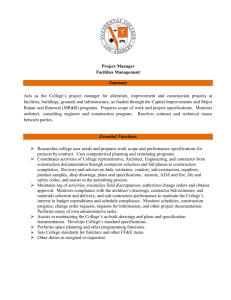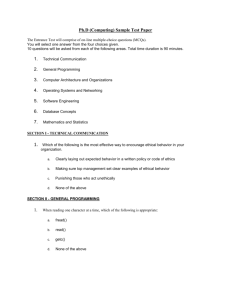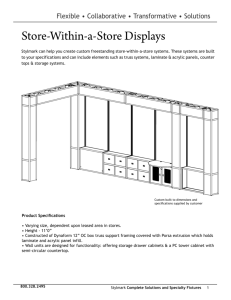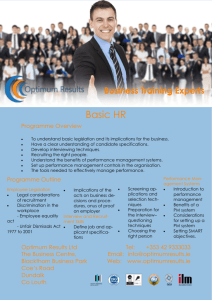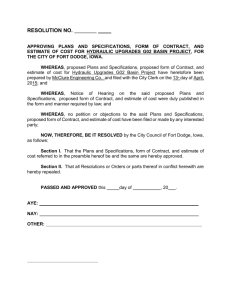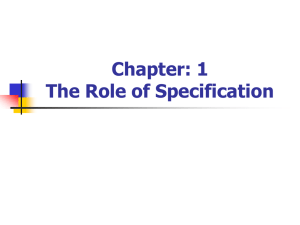Construction Engineering 221
advertisement
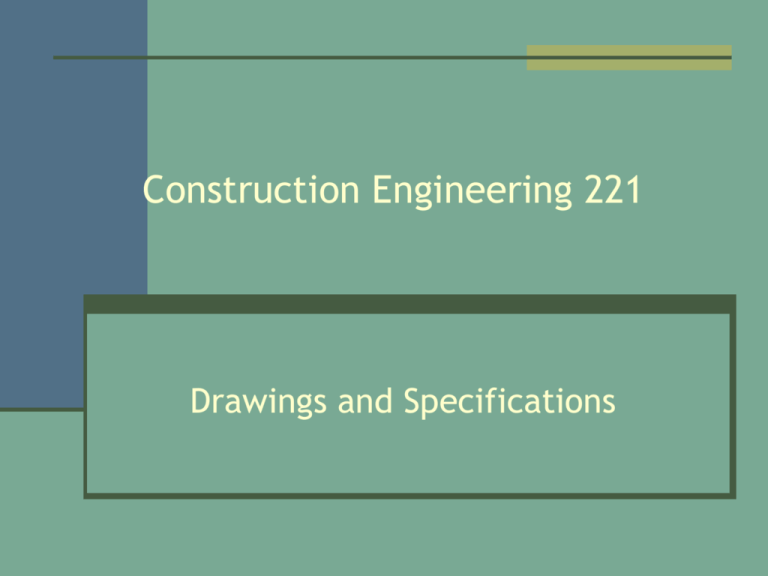
Construction Engineering 221 Drawings and Specifications RPQs 1. Architects and engineers encourage their clients to use competitive bidding and price competition in the selection process for design services. A = True B = False 2. One good aspect of the traditional or linear construction process is that there is usually extensive contractor input into the design process. A = True B = False 3. The purpose of the “retainage” is to hold the contractor accountable to complete the project in accordance with the design. A = True B = False Construction Engineering 221 2 RPQ Answers 1.Architects and engineers encourage their clients to use competitive bidding and price competition in the selection process for design services. A = True B = False The correct answer is B. False Construction Engineering 221 3 RPQ Answers 2.One good aspect of the traditional or linear construction process is that there is usually extensive contractor input into the design process. A = True B = False The correct answer is B. False Construction Engineering 221 4 RPQ Answers 3.The purpose of the “retainage” is to hold the contractor accountable to complete the project in accordance with the design. A = True B = False The correct answer is A. True Construction Engineering 221 5 Architect-Engineer (AE) Term is used to designate the organization, person, firm or team that performs the project design, whether it be architectural, engineering, or a combination of both in makeup. Usually not one in the same except in large architectural firms In-House, Owner-Client, Design-Construct, CM, and Design-Manage AIA, NSPE and ACEC Construction Engineering 221 6 AE Selections Selection Process – Three options Professional qualifications alone Professional qualifications plus fee evaluation Fee evaluation only What set of circumstances would tend to push an owner to one of these options? NSPE ethical ban on competitive bidding – not permissible by U.S. Supreme Court in 1978 under the Sherman Antitrust Act of 1890. Construction Engineering 221 7 AE Scope of Service Prebid Services Needs and desires of the owner Develop the design Preparing documents for bidding or negotiation and contract purposes Aid in selection of contractor Estimate of construction cost Conceptual cost estimate Use ASPE standards manual Construction Engineering 221 8 AE Scope of Service Postbid Services Project inspection Checking of shop drawings Approval of periodic payments to contractor Certificate of completion (warranty) Processing of change orders AE will normally have authority from owner to decide contract interpretation questions, judge performance, condemn defective work and stop field operations under certain circumstances. Construction Engineering 221 9 AE Design Services Fees Percentage of construction cost Multiple of salary cost Multiple of salary cost plus nonsalary expense Fixed lump-sum fee. Total expense plus professional fee Hourly or per diem charge Construction Engineering 221 10 AE Liability To the owner To third parties Exculpatory clauses Statutes of limitations Product liability or strict liability Construction Engineering 221 11 Design Drawings Three important functions Basis for competitive bidding or negotiations Contract administration during construction Basis for settlement of claims and disputes Also, with modification serve as “as builts” Ownership of design Public – ownership is the public agency Private – Architect (most protect with “copyright ©”unless contract says otherwise Construction Engineering 221 12 Design Drawings Why is complete, intelligible, accurate, detailed and well correlated important? Typical subgroups in a set of drawings Site plan Structural Architectural Plumbing Mechanical Electrical Standardized drawing details (typically engineering details for site and civil work-roads, utilities) Construction Engineering 221 13 Specifications Written instructions concerning project requirements Bidding and contract documents with technical specifications Often master specifications are used – be careful Residential and Building – use CSI 16 Division format (see Appendix B, pages 449-450 Engineering – use AASHTO (pages 451-452) Construction Engineering 221 14 Specifications General Conditions (AIA Document A201) (see Appendix C, pages 453-476) Supplementary (Special) Conditions Project specific Requirements “MUST” Read for Bidding and Building Construction Engineering 221 15 Specifications Technical Specifications Most combine Performance and Design requirements Performance Design Construction Engineering 221 16 CLOSED Specifications One brand ONLY – Proprietary product Very non-competitive, therefore higher costs Not allowed in public projects Not recommended for any project, although allowed by private owners Construction Engineering 221 17 OPEN Specifications Allow competition between manufacturers Sets standards for material quality MAY list several manufacturers and their brand name of product Allow “OR APPROVED EQUAL” substitutions Substitutions are at the contractor’s risk, subject to the architect’s review and approval Construction Engineering 221 18 STANDARD Specifications Most common for roads, utilities Not issued as part of the specifications book for the specific project Issued as a separate specifications book by many state Departments of Transportation, Cities and Towns Cover standard materials used in most projects Concrete mix designs Fire Hydrants Manhole structures Construction Engineering 221 19 QUIZ #1 Tomorrow at the beginning of class Covers chapters 1, 2, 3 and 4 and material covered in class Construction Engineering 221 20

